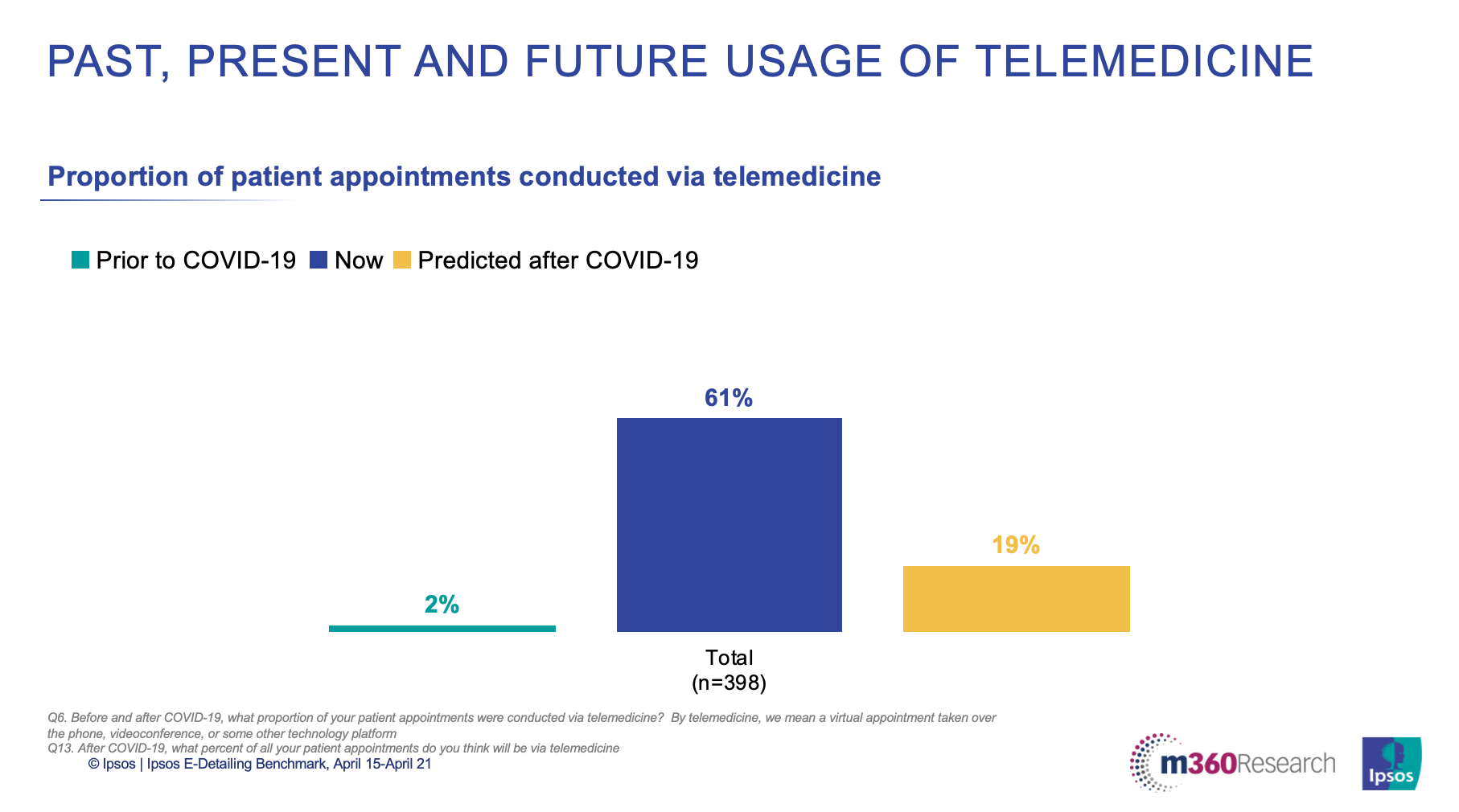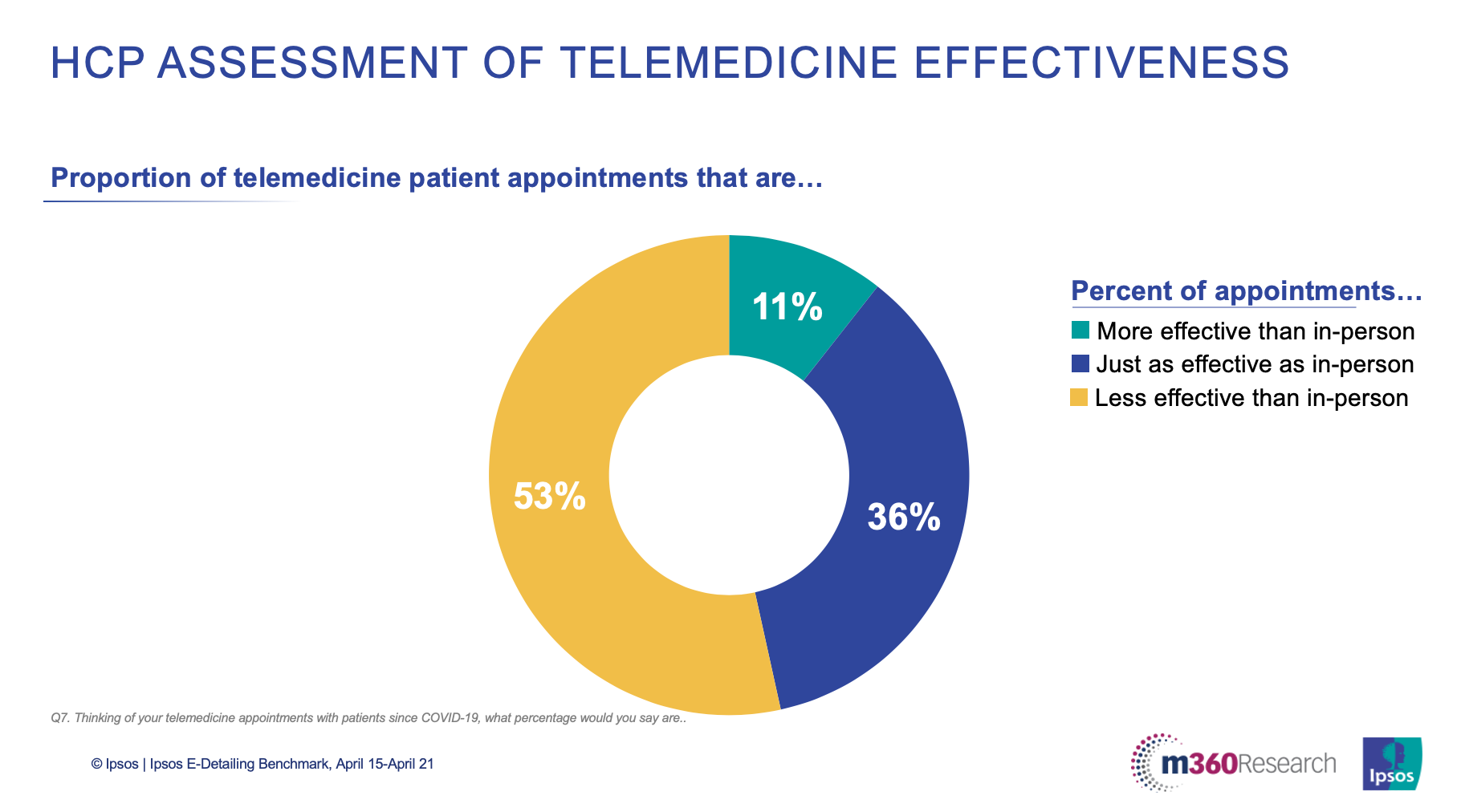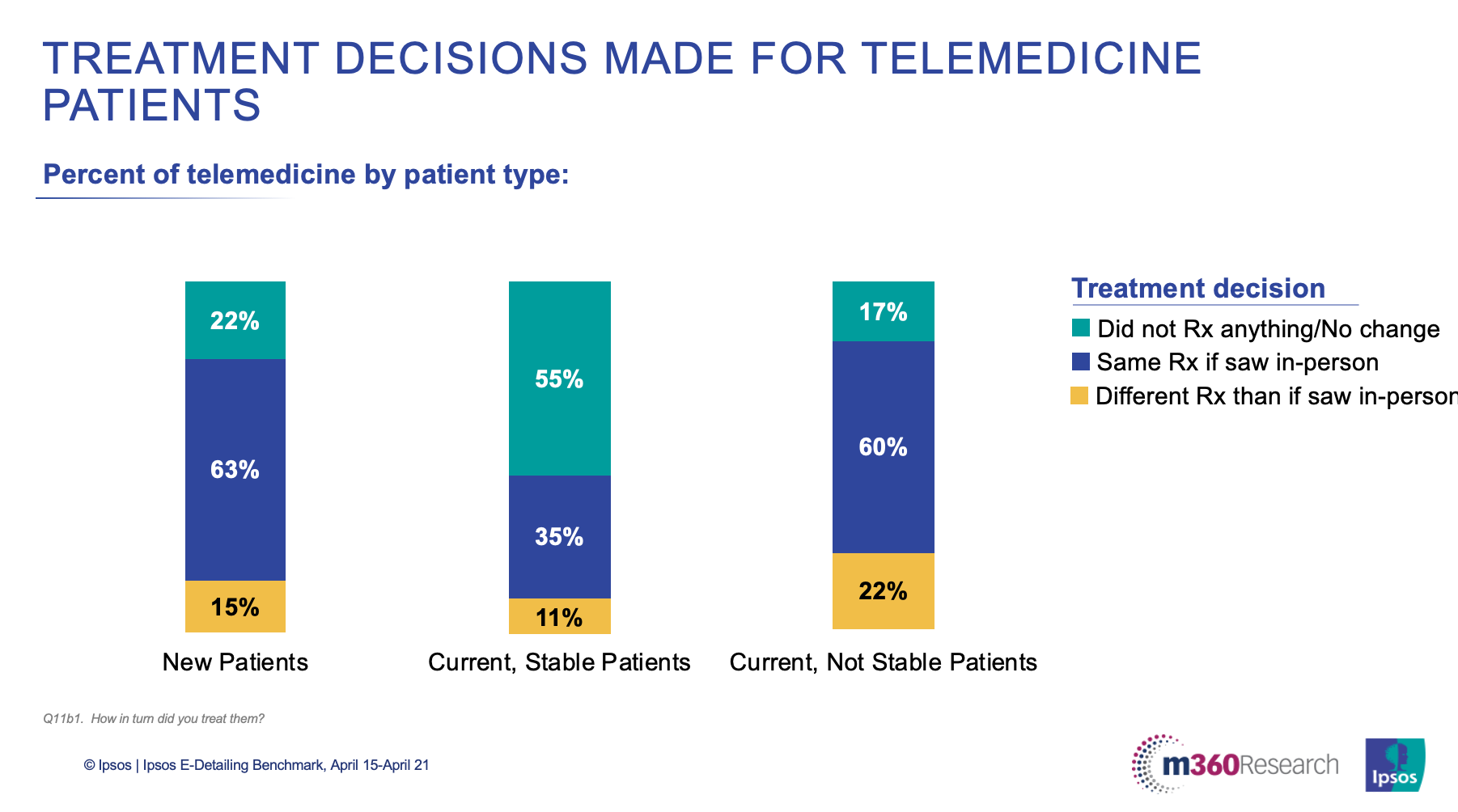The Truth About Telemedicine
Scott Morano explores some of the challenging questions brands will need to ask in light of an HCP switch to telemedicine.
Anecdotally, we know physicians are seeing fewer patients since COVID-19, but the magnitude of that decline is surprisingly large. In recent research conducted by Ipsos’ Healthcare team on the impact of COVID-19 on HCP practices, co-sponsored by M360 Research, physicians tell us their typical weekly patient load has dropped by more than 50% since the pandemic started. The large reduction in patient load is coupled with the dramatic increase in the proportion of appointments delivered via telemedicine, as over half of their remaining appointments are delivered via telemedicine.
Click to enlarge image.

Looking ahead, most HCPs believe telemedicine will be here to stay, anticipating its usage for upwards of 20% of their patient load, even though they believe over half of their telemedicine appointments are less effective than an in-person appointment would have been.
Click to enlarge image.

One of the open questions is why HCPs would plan to see one in five patients via telemedicine if they find it a less effective medium. They could assume insurance companies might mandate certain types of patients remain on telemedicine. In addition, they might find some patient types to be well-suited for telemedicine.
Looking at specific patient types, the vast majority of current telemedicine patients are stable patients, with around 20% representing the classic “switch” patient, and 12% new patients.
Click to enlarge image.

We find 90% of HCPs reporting their practice is accepting new patients – perhaps not so surprising given the dramatic reduction in their current patient volume. And HCPs are even treating new patients virtually through telemedicine.
Click to enlarge image.

HCPs tell us they prescribed a different treatment for 15% of their new patients, specifically because they were treating them via telemedicine and not in-person. Our data doesn’t look at what specific prescribing choice they were making and why, but it does tell us that across the board – whether in primary care, oncology, immunology, migraine, etc. – new starts are, to some extent, being impacted by the swift adoption of telemedicine.
If we look at the cohort of current, stable patients, half receive no treatment adjustment; and when HCPs do make a change, it’s generally the same change they would have made during an in-person visit. Therefore, the impact of telemedicine on prescribing for a stable patient is low.
When we turn to that classic switch patient – a current patient who is not stable on current treatment – this is where we see the strongest impact on prescribing patterns. Over one in five of the decisions HCPs make for the switch patient are different than the decision they would have made in person. This suggests the treatment algorithm – especially in later lines – could shift due to a different, more separated relationship between physician and patient. Again, there could be many reasons why a virtual visit would result in a different decision, and that different decision could be literally “no decision.” As an example, we know current guidelines in HIV recommend against switching a patient right now, unless absolutely necessary, so that “different decision” in this case could be keeping the patient on their current treatment longer than the HCP would like to.
If telemedicine remains the “norm” for 20% of patient visits, treatment algorithms could shift quickly. It will be important for pharmaceutical companies to understand how and why those algorithms could shift.
Our research confirms that both treatment algorithms and leverage points along the patient journey have changed and will need to be reevaluated for your specific therapeutic areas. Keeping pace with these shifts in prescribing and understanding the reasons behind them will help you decide what to do both now and next regarding your customer engagement and promotional strategies.
For example, will the adoption of telemedicine push more HCPs to prescribe your brands in situations where they would have preferred not to? If so, increases in your share might be less a result of your marketing efforts or HCP/patient preferences, and more built on potentially temporary decision criteria. Conversely, declines in share might be because HCPs have new or exacerbated barriers to prescribe, such as need for in-office diagnostics/administration, complicated dosing, etc. Your teams have options, such as to take advantage of these changes or to seek to reverse them. This is a critical challenge your teams will face as shifting engagement channels settle into a “new norm.” Are you ready to face this truth?
Scott Morano is Vice President, Ipsos.
About the study
These are some of the findings of an Ipsos poll of 398 HCPs, conducted in partnership with M360 Research, between April 15 and April 23.
Click here for a more in-depth look and commentary on this research.
The Misinformation Maze: Navigating Public Health in the Digital Age
March 11th 2025Jennifer Butler, chief commercial officer of Pleio, discusses misinformation's threat to public health, where patients are turning for trustworthy health information, the industry's pivot to peer-to-patient strategies to educate patients, and more.
Navigating Distrust: Pharma in the Age of Social Media
February 18th 2025Ian Baer, Founder and CEO of Sooth, discusses how the growing distrust in social media will impact industry marketing strategies and the relationships between pharmaceutical companies and the patients they aim to serve. He also explains dark social, how to combat misinformation, closing the trust gap, and more.